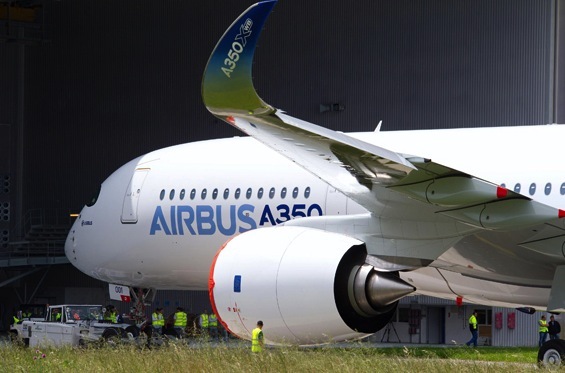The use of lightweight and durable composite materials can significantly reduce fuel consumption and minimize maintenance expenses. These advanced materials are much lighter than traditional materials such as metal, which reduces the overall weight of the aircraft and allows it to be more fuel efficient. They are also strong and resistant to wear and tear, which means they require less maintenance and can potentially extend the lifespan of the aircraft. By using composites, it is possible to achieve significant cost savings through reduced fuel consumption and lower maintenance costs.
The Airbus A350 is a leading aircraft in its class thanks in part to its use of composite materials on critical structural components. Composite materials are unique combinations of two or more materials that exhibit extraordinary physical and chemical properties when combined. One type of composite material used on the A350 is carbon fiber reinforced plastic (CFRP), which consists of microscopic carbon fibers attached to a plastic resin. Individually, neither the carbon fibers nor the plastic resin would have the necessary properties for use in aircraft structures, but when combined, the composite material becomes stronger and lighter than conventional metals like aluminum and iron, and is more resistant to corrosion.
The process of creating CFRP involves carefully controlling the heat treatment of raw fibers to increase thermal conductivity and strength, bundling the fibers into a matrix, and hardening the matrix using resin. The load-bearing properties of the CFRP are achieved through a precise fabrication process, and high-quality composites with precisely shaped sheets of fibers are used on the A350 to achieve the required level of rigidity. The extensive use of lightweight composites on the A350 directly contributes to its fuel efficiency and minimizes maintenance costs, as the materials require fewer maintenance tasks and have a longer lifespan due to their corrosion resistance.
However, it is important to note that the manufacturing of composite materials is energy-intensive and has a higher environmental impact compared to other materials. Despite this, several studies have shown that the use of composite structures in aircraft can lead to a 15-20% reduction in environmental emissions over time. The recyclability of composite materials, such as the ability to re-melt and reuse thermoplastic CFRPs, can also help mitigate the environmental impact of their production. Additionally, the use of lightweight and robust composites on the A350 results in a lighter aircraft structure that can carry more payload farther than a conventional aluminum structure, and requires less maintenance over its lifespan. Overall, the use of composites in the design of the A350 has allowed for a significantly improved aircraft that maximizes fuel efficiency and minimizes maintenance costs.

